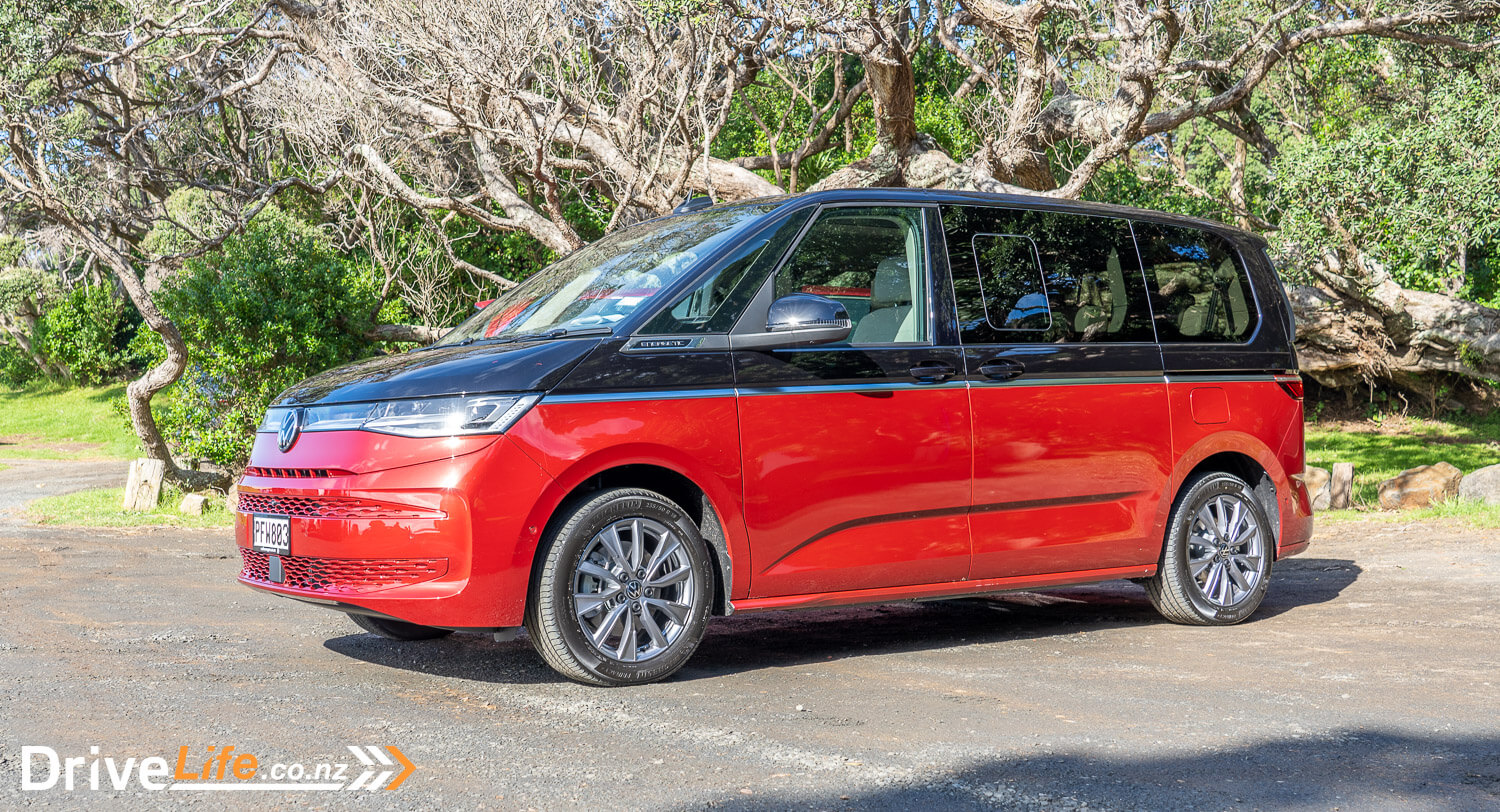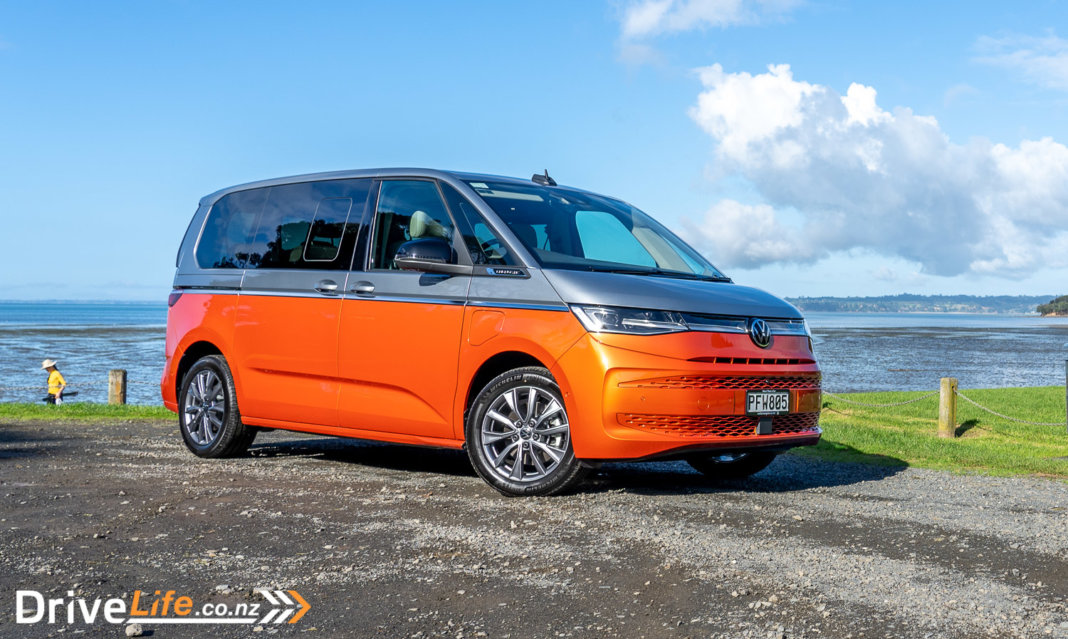A plug-in hybrid (PHEV) van seems like the perfect answer for a lot of families, tradies, and delivery drivers. You get around 50Km of electric range but have a petrol engine as a backup.
We’ve often said that a PHEV is a good stepping stone for a lot of people; it means they get the comfort of having a petrol engine there as that backup but can dip their toes in the water of EV ownership. Eventually, we’d expect those PHEV owners to move to a fully electric vehicle when they see it’s not that difficult.
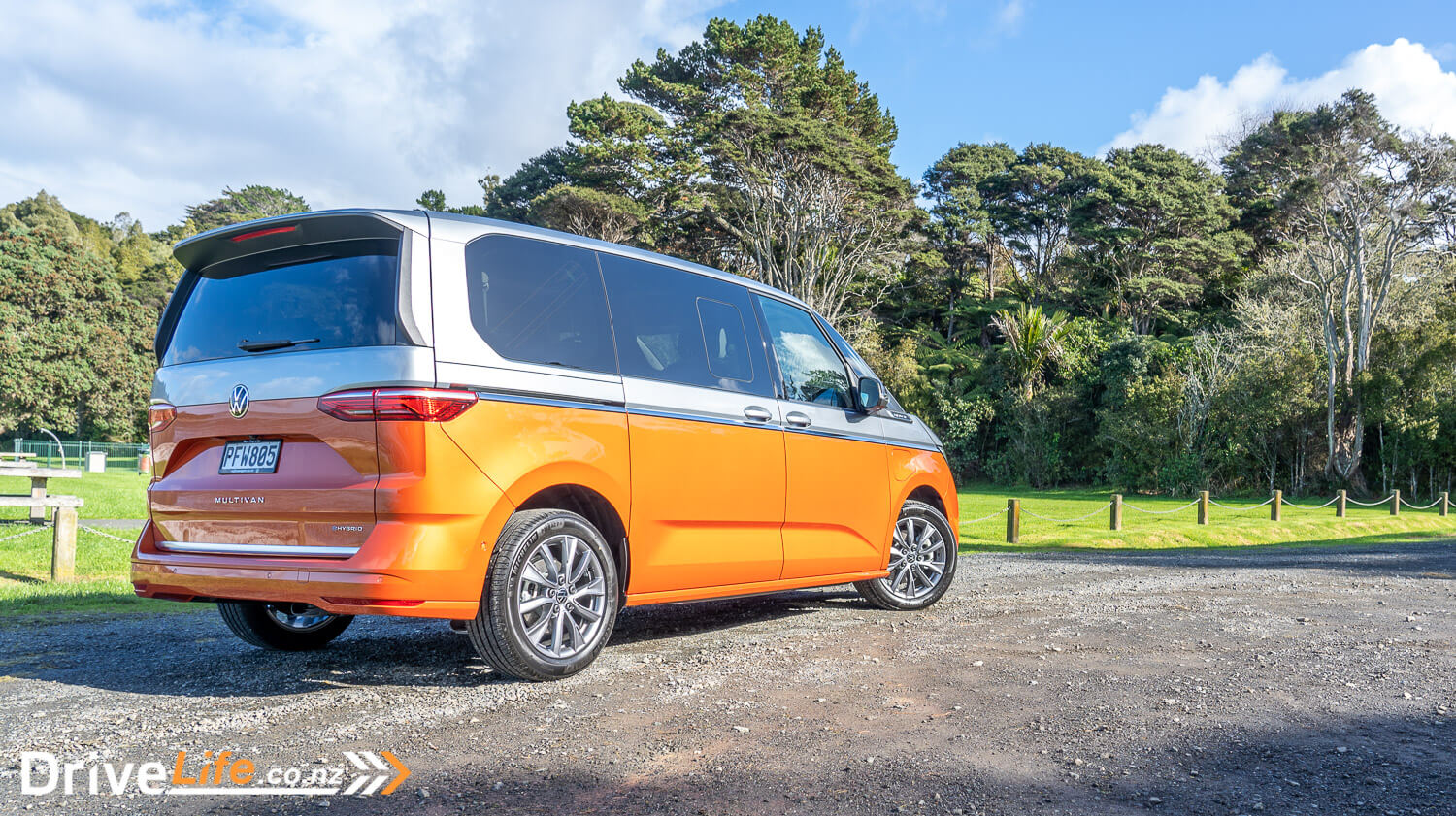
Volkswagen New Zealand has launched the Multivan Plug-In-Hybrid, which they hope will appeal to those families and other van users who might want to not only be kinder to our environment but save a bit of cash on fuel at the same time. This is Volkswagen New Zealand’s first commercial EV offering.
We headed to Auckland for the launch of the Multivan Plug-In-Hybrid, to see if it is going to tick the right boxes for buyers.
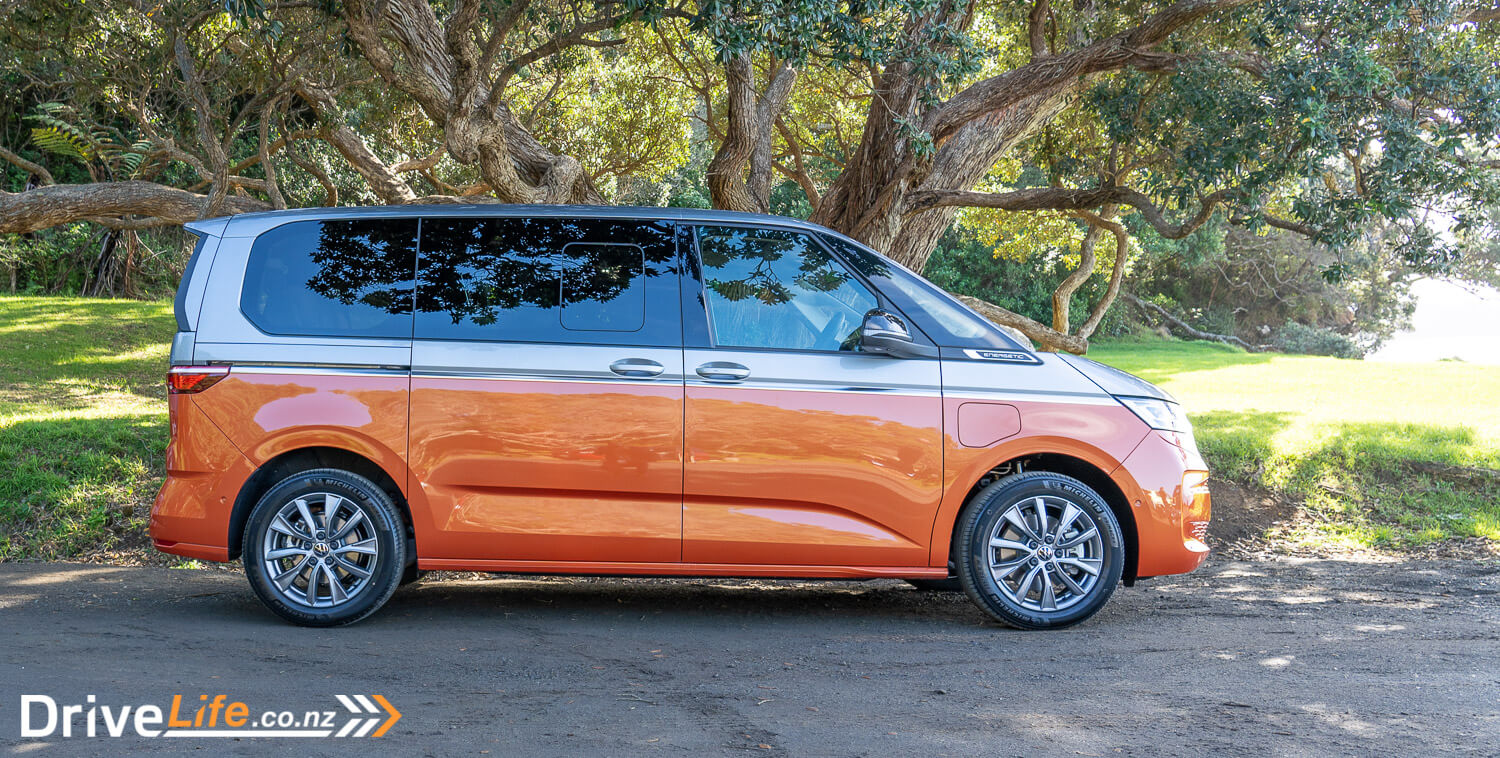
2022 Volkswagen Multivan Plug-In Hybrid: Models & Specs
New Zealand will get two models to start with; the Family PHEV, and the Energetic PHEV. The base Family model is priced at $78,800 (+ORC), and being a hybrid will be eligible for a $5,750 rebate through the Clean Car Scheme.
The Energetic is a lot higher spec, and is priced at $106,000.
Both have a 5-star ANCAP rating, and both are front-wheel-drive, have a 1.4-litre, 4-cylinder turbo petrol engine in combination with a plug-in hybrid setup with a 13kWh battery pack. Volkswagen suggests this should give the van around 50Km of range on EV power alone. The combined power output is 160kW, and torque at 350Nm.
There’s a 50-litre fuel tank and the combined fuel consumption is listed at 1.7L/100Km, with weight at a hefty 2,143Kg.
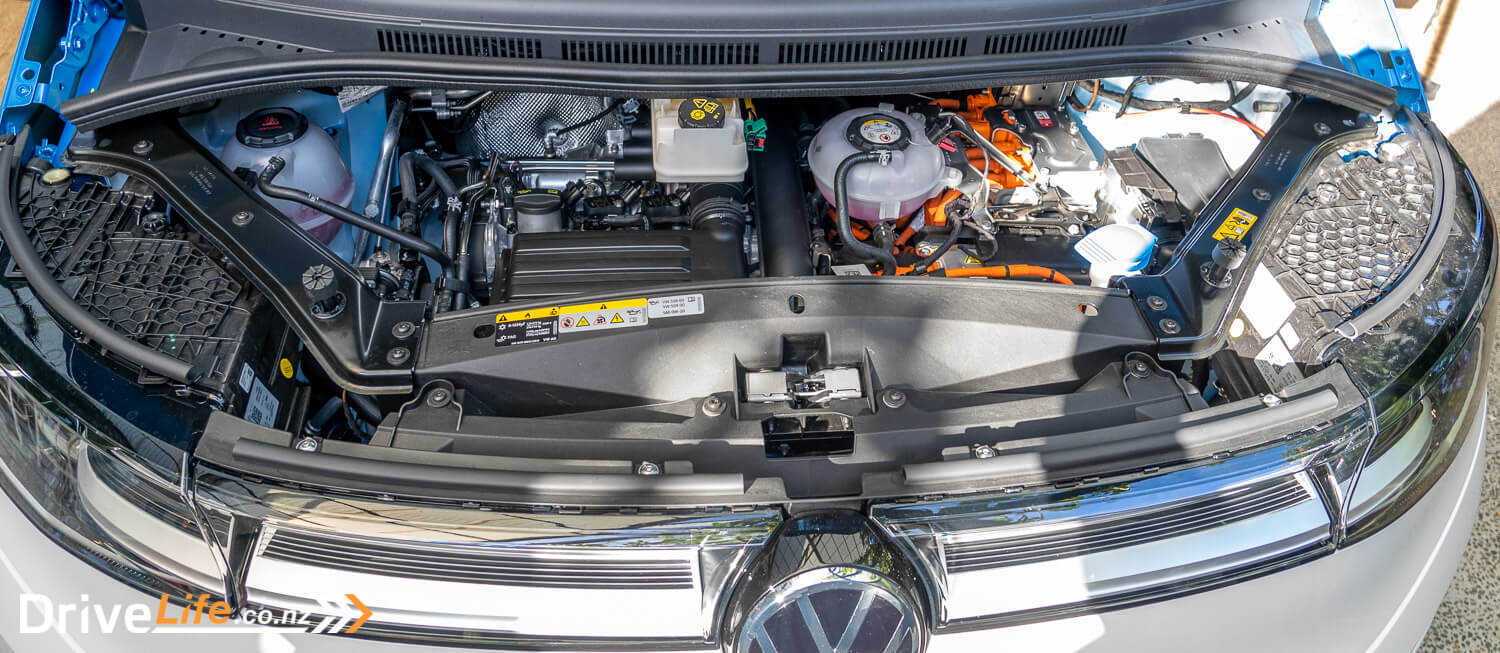
Standard equipment levels are high, with adaptive cruise, multi-zone AC and many other features that we’ll cover off in a full review. One of the highlights of the car is the options around seating. All the rear seats can be removed completely to give a flat floor and a large load space. Or, if the seats are in play, you can turn them around when parked to have the second row (for example) facing the third row. Or you could switch the entire third row around to face out, leave the back door open and watch the waves at the beach in a high level of comfort.
All the seats can easily move back and forwards to give whatever legroom or load space you want. Even the fold-out centre table slides back and forth, so it can be used as a small tray between the passenger and driver, or slid backwards between the second or third rows and then folded out – either table side, or both – and used on the move.
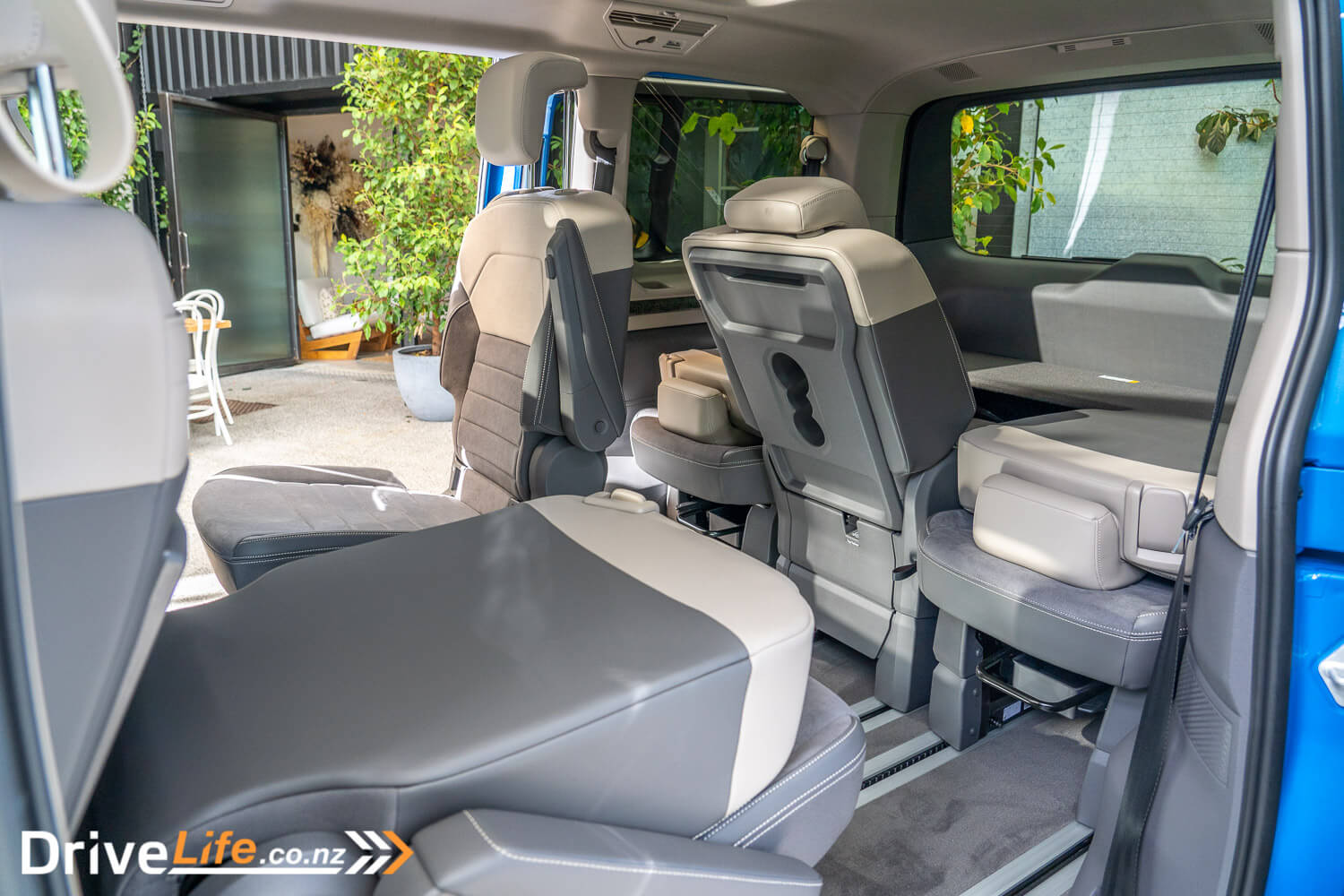
For driving, only the middle seat of the third row can face rearwards while on the move, due to seatbelt arrangements. This might suit that one sibling who’s had an argument and wants a little me-time away from the rest of the brothers and/or sisters. Having sliding seats and a table means that the owner can simply remove everything from the back of the van, and use it to move that teenager out of home (at last!). You’d end up with a flat floor, ready for boxes and furniture.
The seatbelt arrangements themselves are pretty nifty. Every seat has a seatbelt alert if it isn’t belted up and there’s a passenger in the seat, the driver is alerted. But how does this work, when the seats are sliding? Every seat has a Bluetooth connection for wireless networking between the car and the seat.
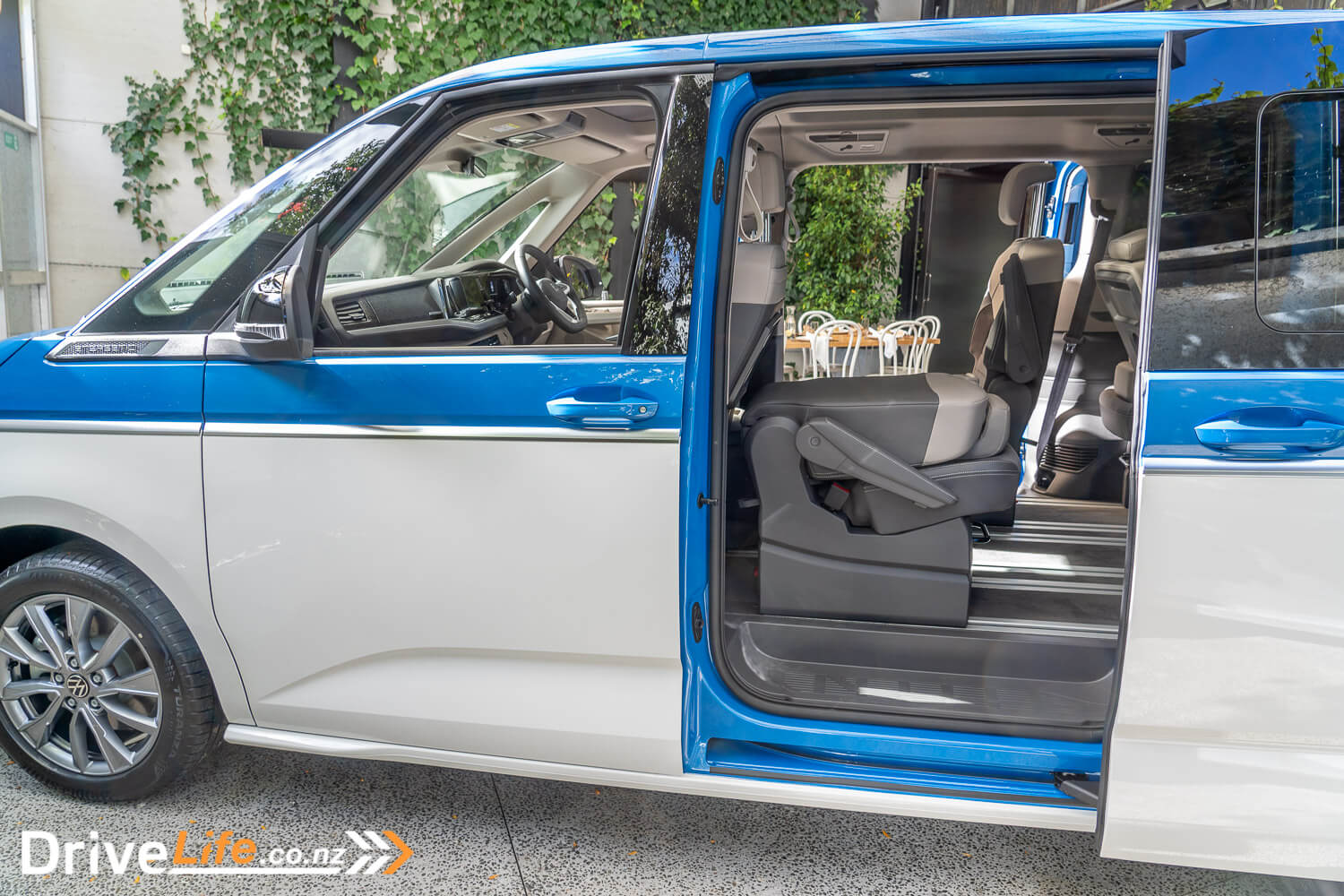
There will also be a long version for sale by order only; it’s aimed at shuttle companies, and has 200mm extra rear overhang, mainly they suggest giving more room for suitcases and the like.
Of the 100 units initially allocated for New Zealand, VW NZ has already sold 40 of these, in a mix of 12 Energetic and 28 Family models.
VW NZ does have stock available now, mitigating a huge wait that some people are facing for other models.
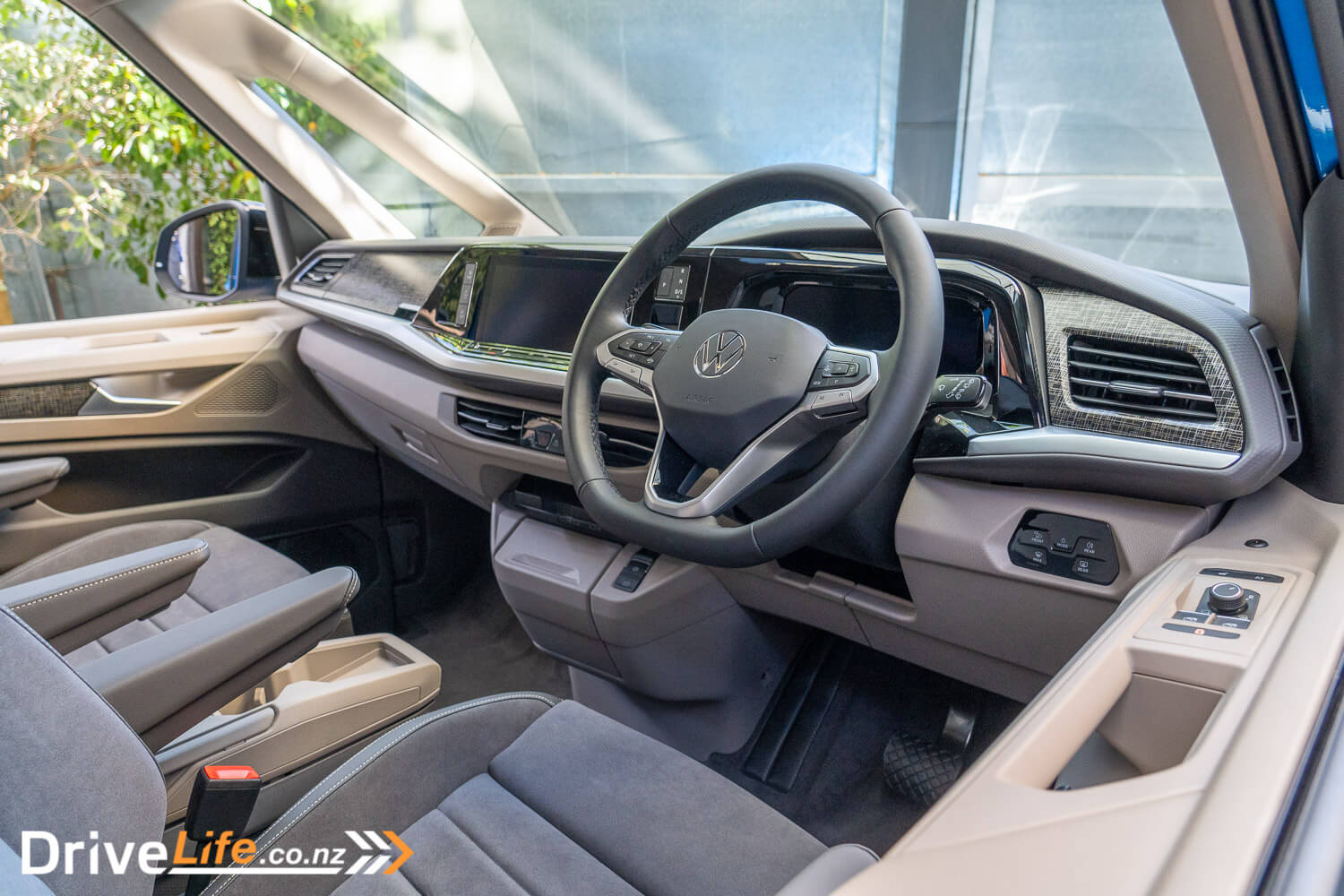
2022 Volkswagen Multivan Plug-In-Hybrid: Drive
I jumped in as a front-seat passenger for the drive to Cornwallis Wharf, where we would switch from the top-spec Energetic model we were in, and into the base Family spec with me driving.
First impressions are excellent. The Multivan Plug-In-Hybrid always starts in EV mode so there’s no engine noise, but even so, all other noises are very well subdued. There’s pretty much absolutely silence in this van. It feels very light inside too, as the only option for the interior headlining and pillars is a beige colour, so this lifts the feeling of the interior instantly. Thankfully, black headlining is not even an option. We’re in the top-spec so there’s the huge panoramic roof in the rear and a smaller one in the front. Neither can open, but the natural light coming into the cabin makes it feel roomier and larger than it is. Adding to this feeling of a huge cabin is that front windscreen – it’s enormous, and seems to be a mile away from the passengers.
Not that the interior is small in any way. There’s a huge amount of space front to rear, and side to side. With the centre table slid back, you can easily walk between the front seats to the second row and then right to the third row, as there’s no centre seat in the second row.
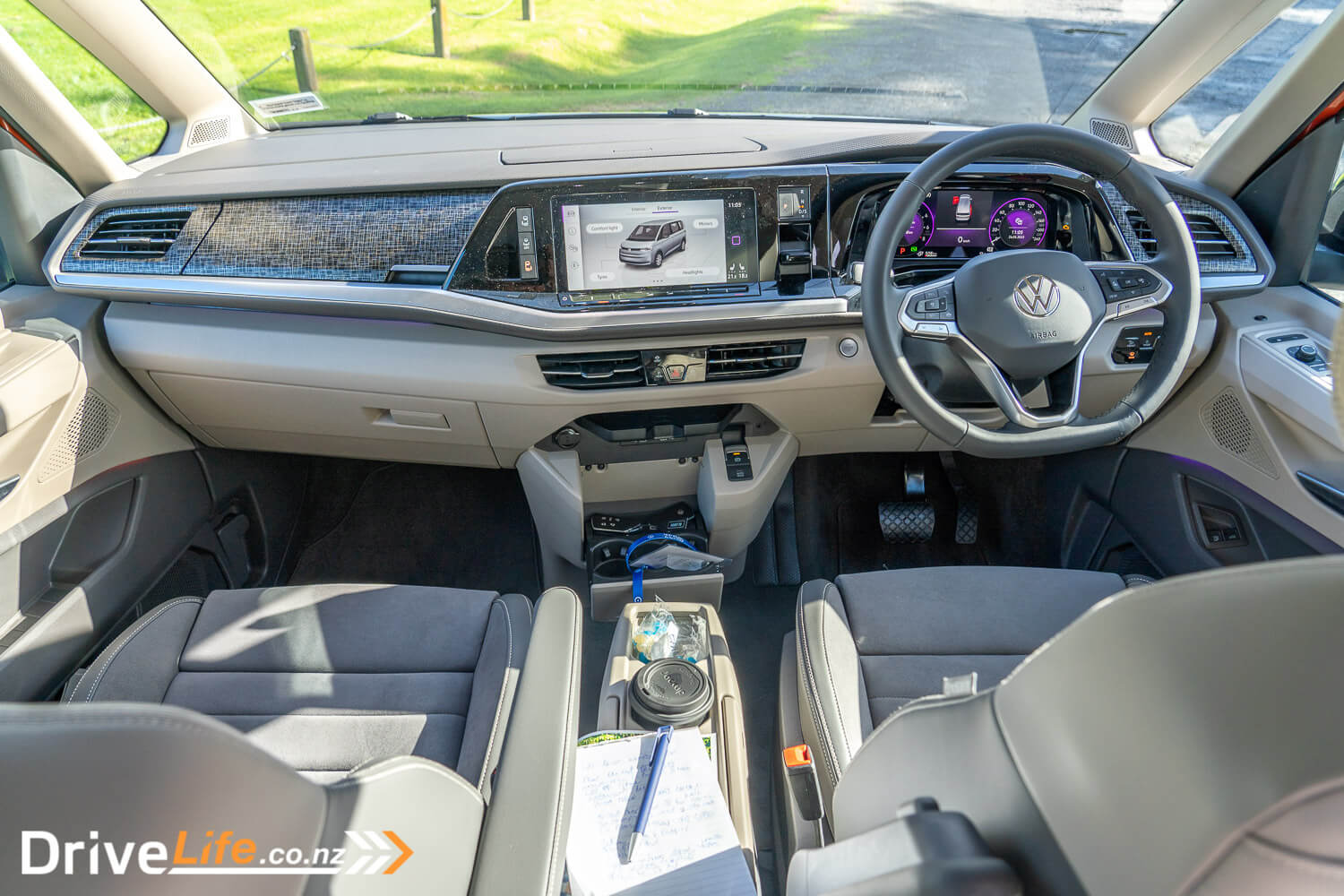
There seems to be plenty of storage space too, with a cubby right up on top of the dash, a smallish upper glovebox, and a larger lower glovebox. Even the doors have extra storage shelves built into them, as well as a small rubbish bin/bag arrangement.
Both front seats in this model have left and right armrests, easily adjustable and very comfortable. This is certainly a van I could travel from Wellington to Auckland in without any stress.
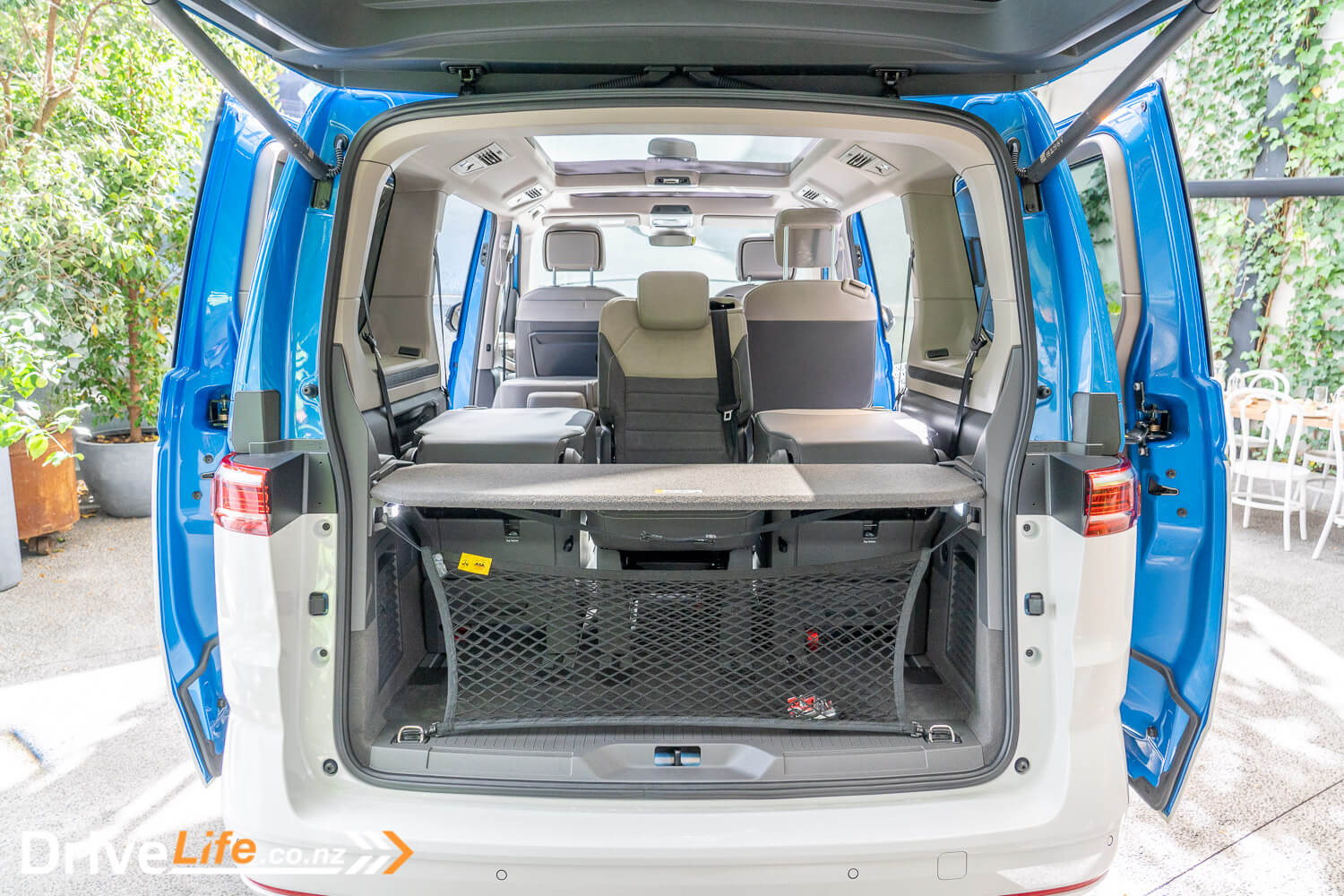
On arriving at Cornwallis Wharf, we switched models and I jumped into the driver’s seat. The van can feel large, but it doesn’t take long to get into the groove of it. It performs very well, and even on the windy roads from Cornwallis Wharf, it does nicely with small amounts of body roll and it’s easy to drive the car on the throttle to make for a smoother drive for your passengers.
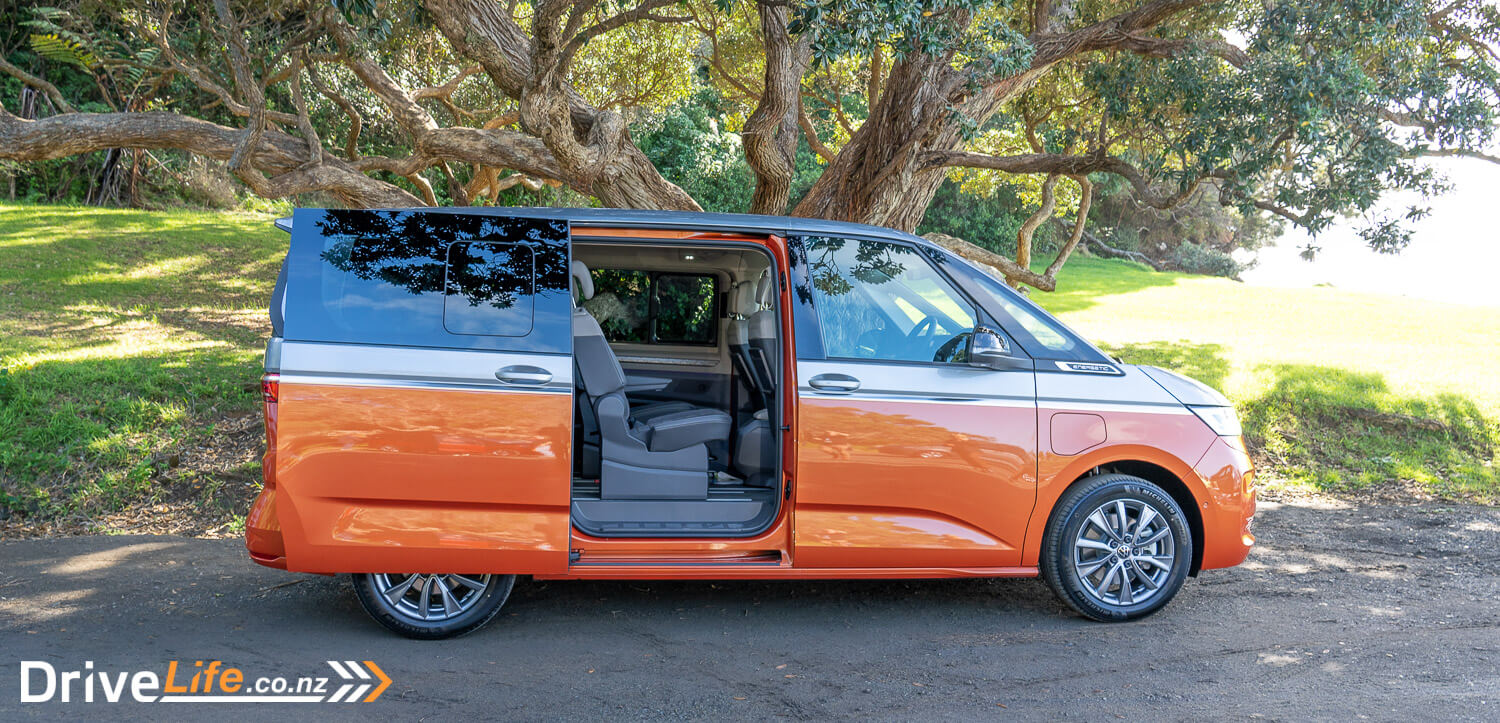
I played with the brake regen settings while driving; you get three options: Off, On, or Automatic. Having brake regen On means it’s full-on all the time, and you get no control over the amount of regen, and it’s fairly severe. Sticking the car in Automatic mode means it takes in data from GPS and other places and applies the amount of regen it believes you need. It feels similar to the Adaptive Regen on the BMW iX we recently reviewed, and seems to work just as well. I ended up leaving the van in this mode for the drive back to the city.
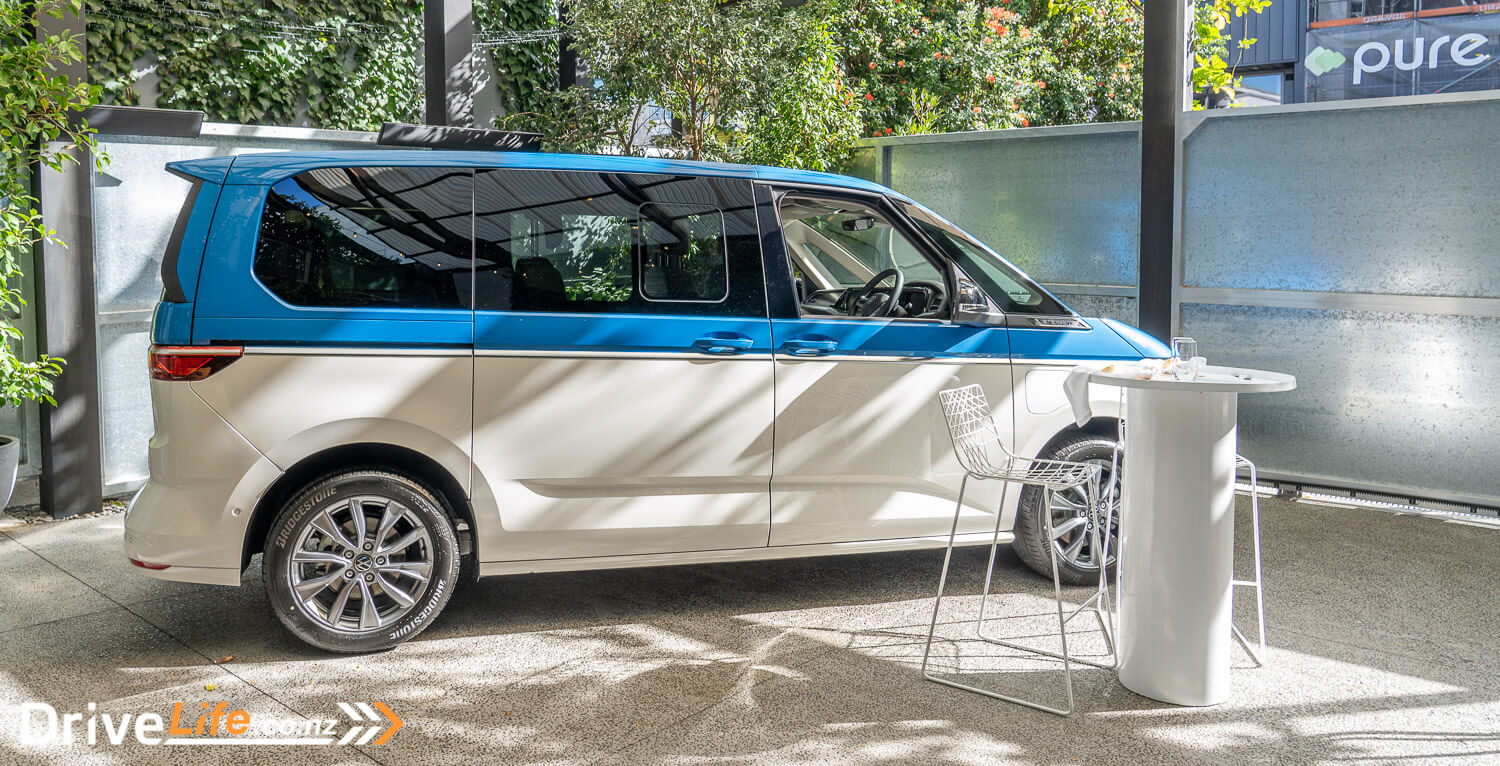
The Multivan we were driving had some miles on it, and over the last 750Km of driving, it has averaged 2.8L/100Km of fuel. That’s pretty impressive for such a large vehicle, and a good indicator of what would likely be its average fuel consumption.
DriveLife is booking a Multivan Plug-In-Hybrid in for review, join our newsletter so you don’t miss it.
